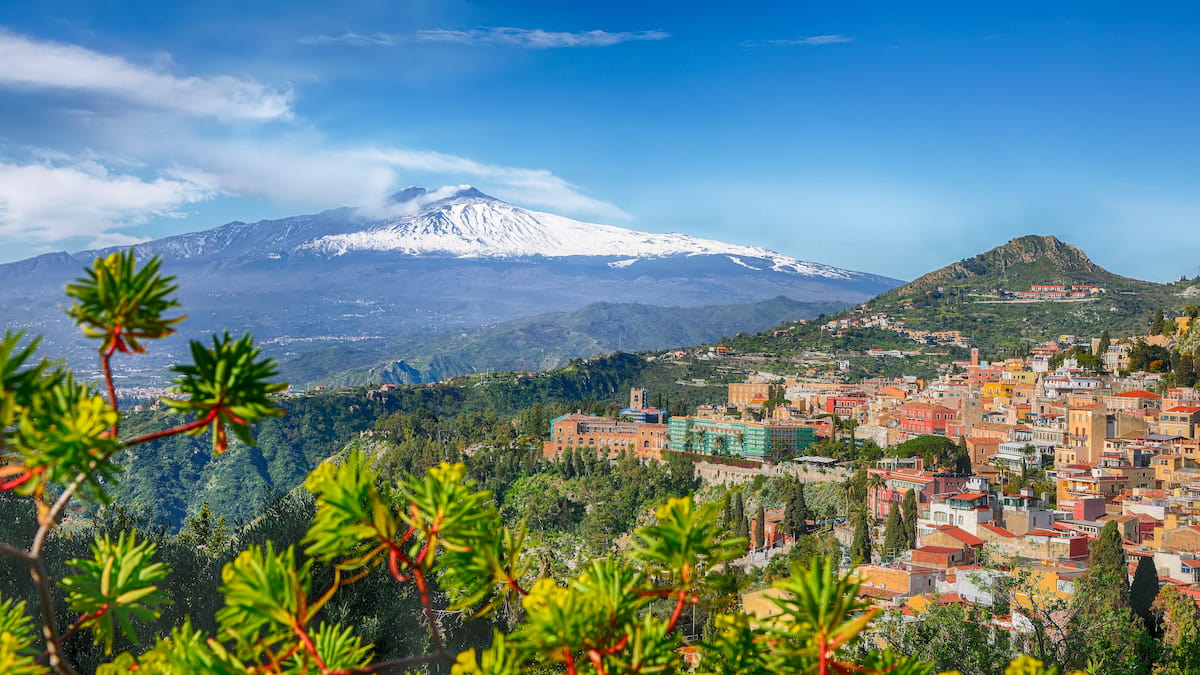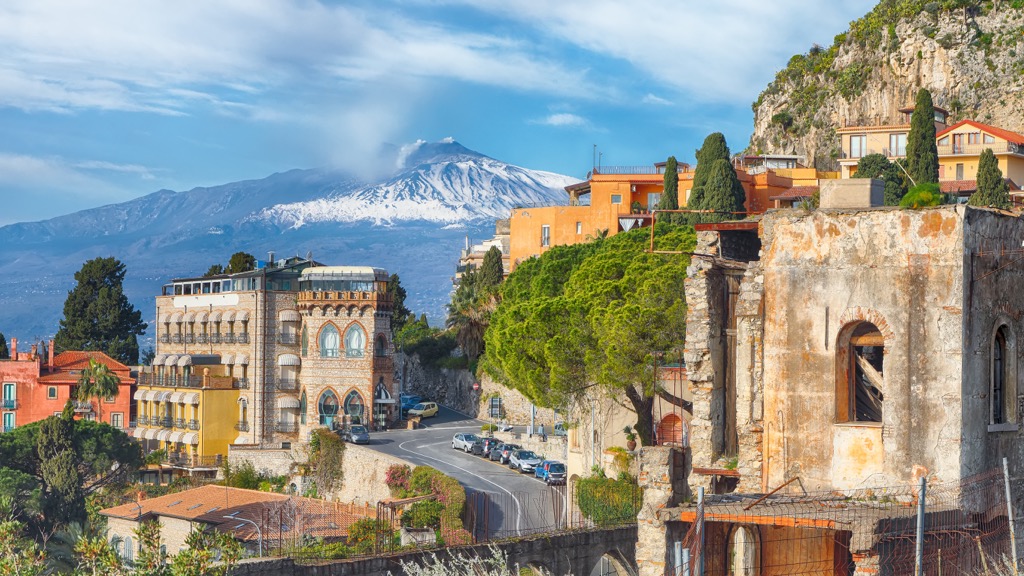Get PeakVisor App
Sign In
Search by GPS coordinates
- Latitude
- ° ' ''
- Longitude
- ° ' ''
- Units of Length

Yes
Cancel
Share ×

Scan the QR code and open PeakVisor on your phone
❤ Wishlist ×
Choose
Delete
Sicily (Italian: Sicilia) is an island in the Mediterranean Sea marking one of Italy’s five autonomous regions. Mount Etna, located on the island's eastern side, is the tallest active volcano in Europe. There are 3581 named peaks in Sicily, with the tallest and most prominent being Mount Etna (3,357 m/ 11,014 feet), though the height of the mountain changes based on eruptions.
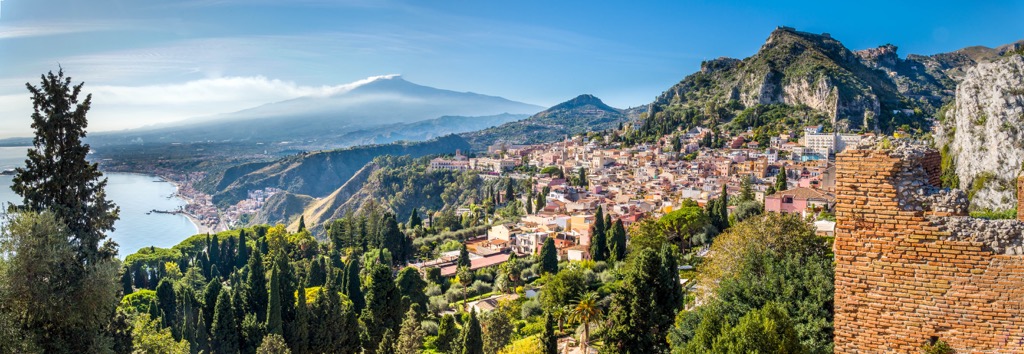
The island of Sicily forms a roughly triangular shape and is off the coast of southern Italy. Sicily is separated from the region of Calabria in mainland Italy by the Strait of Messina. This strait spans 3.2 km (2 miles) in the north and roughly 16 km (10 miles) in the south.
Sicily has an area of 25,711 sq km (9,927 sq miles), with the northern and southern coasts each spanning roughly 280 km (170 miles). The island has an estimated 1,484 km (922 miles) of coastline. Sicily lies approximately 160 km (100 miles) north of Tunisia in northern Africa.
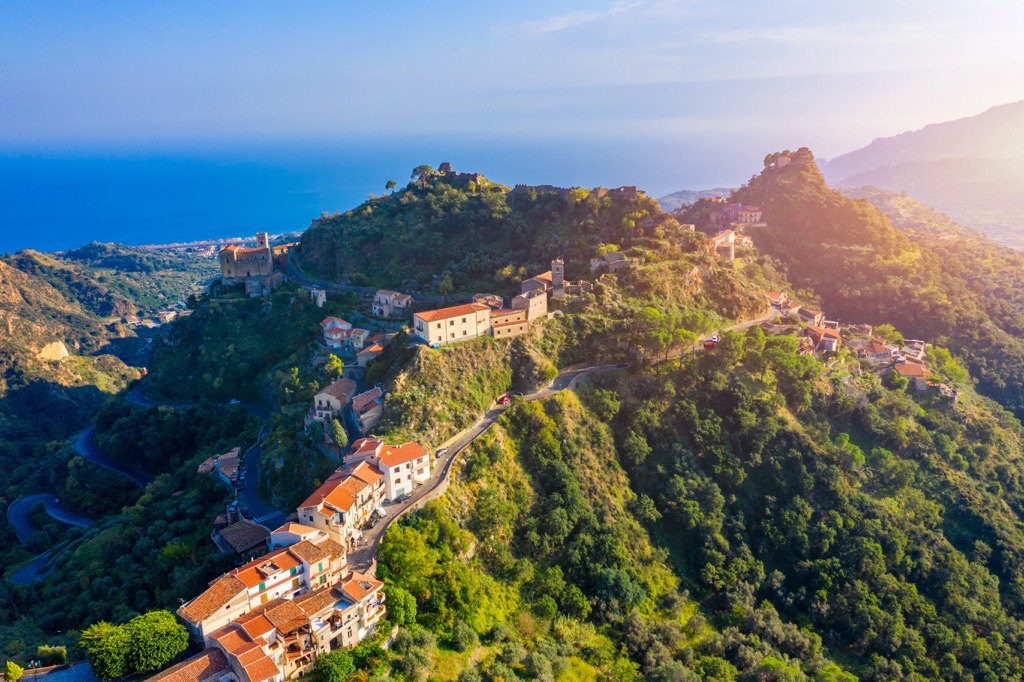
Numerous peaks and mountain ranges dominate the inner regions of Sicily, many of which mark extensions of the mainland Apennines. Mount Etna is near the island's eastern coast and has a basal circumference of 140 km (87 miles), making it the largest of the three active volcanoes in Italy. The Madonie, Mebrodi, and Peloritani ranges lie in the island’s northern section, while the Hyblaean range is in the southeastern region.
The coasts of Sicily feature a typical Mediterranean climate. The island's cliffs are met with sandy and rocky beaches. Rolling hills and low mountain ranges cover a majority of the island. The Plain of Catania marks the only wide valley on the island.

Besides the main island, the region of Sicily also encompasses the nearby Aeolian Islands. These small islands are in the Tyrrhenian Sea, northeast of Sicily’s northern coastline. The seven Aeolian Islands are part of a volcanic archipelago.
Numerous rivers flow through Sicily, with many draining into the sea along the island's southern coast. Significant rivers include the Salso, Alcantara, Belice, Dittaino, and Platani.

Visitors have numerous options to explore the natural beauty of Sicily. Some of the major protected areas include Mount Etna Park, Madonie Regional Nature Park, Nebrodi Regional Park, and Zingaro Nature Reserve.
The region of Sicily has a unique geological history, as the island lies along the northern edge of the African continental plate. Sicily marks the collision of the Eurasian and African plates, a retreating subduction system.
As the African plate subducts, the Eurasian plate fills this space and falls towards the Earth’s mantle. This tectonic movement results in volcanic activity and has formed the Tyrrhenian slab north of Sicily.
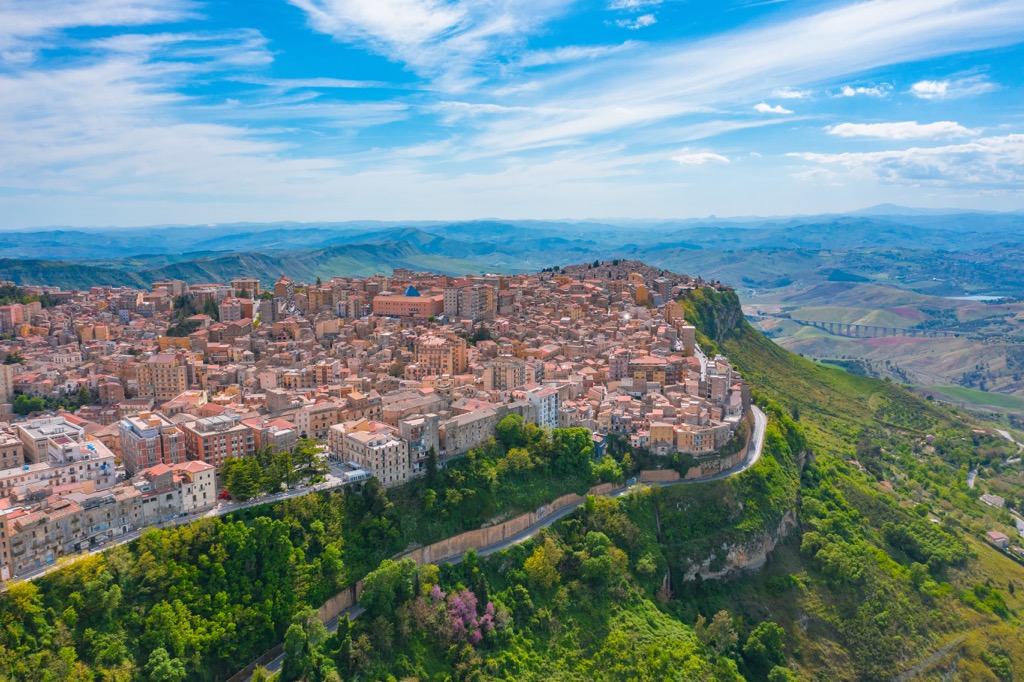
Mount Etna is a stratovolcano composed primarily of basalt. As the African plate continues moving, magma builds beneath Mount Etna as the Eurasian plate fills the widening gap.
Mount Etna erupts with impressive regularity. An eruption lasting several weeks in 2021 was recently followed by a new one starting in May 2023. In fact, 2023 has been an eventful year for Etna. In addition to the eruption, the upper slopes of Etna received several meters of snow from a three-day monster storm in February. The snow buried houses and snapped trees across roads, isolating towns for weeks.
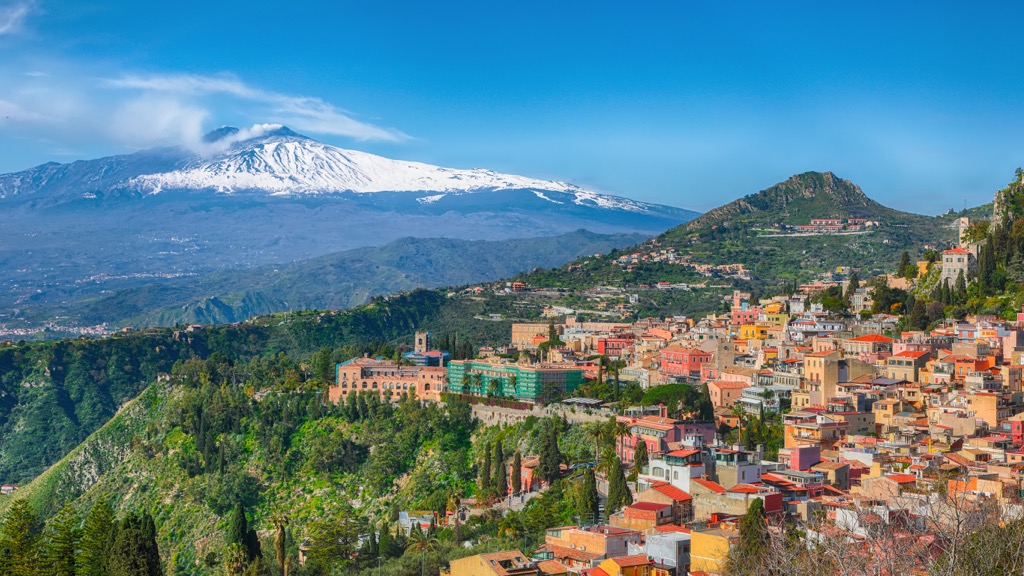
Mountain ranges along the northern coast of Sicily are part of the Apennines, which span nearly 1,000 km (621 miles) across Italy. The Apennines were formed by mineral sediments deposited along ancient sea beds. Once buried, subsequent layers applied enough heat and pressure over time to form the rock.
Despite their proximity to the Alps, the Apennines have a separate geological history. The Apennines and its many subranges began forming around 20 million years ago. Rock types found in Sicily include basalts, limestone, and carbonate turbidites.
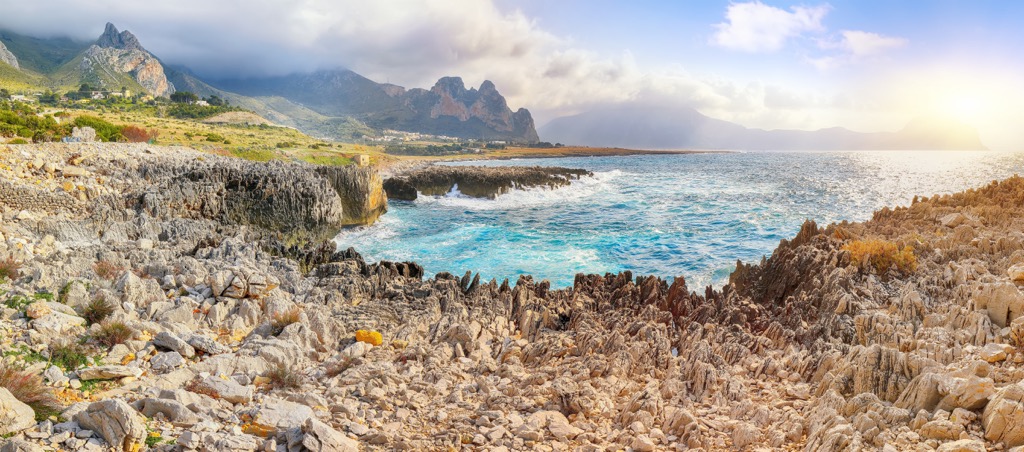
During Roman times, farmers largely deforested Sicily. Like in many parts of Europe, the forests never returned to their original size. Man-made deforestation dried the region's climate, limiting rainfall and water resources.
Significant forests on the island remain near Mount Etna, in the Bosco della Ficuzza Nature Reserve, and in the Nebrodi Mountains. There are minimal to no amount of forested sections found in central and southwestern Sicily.
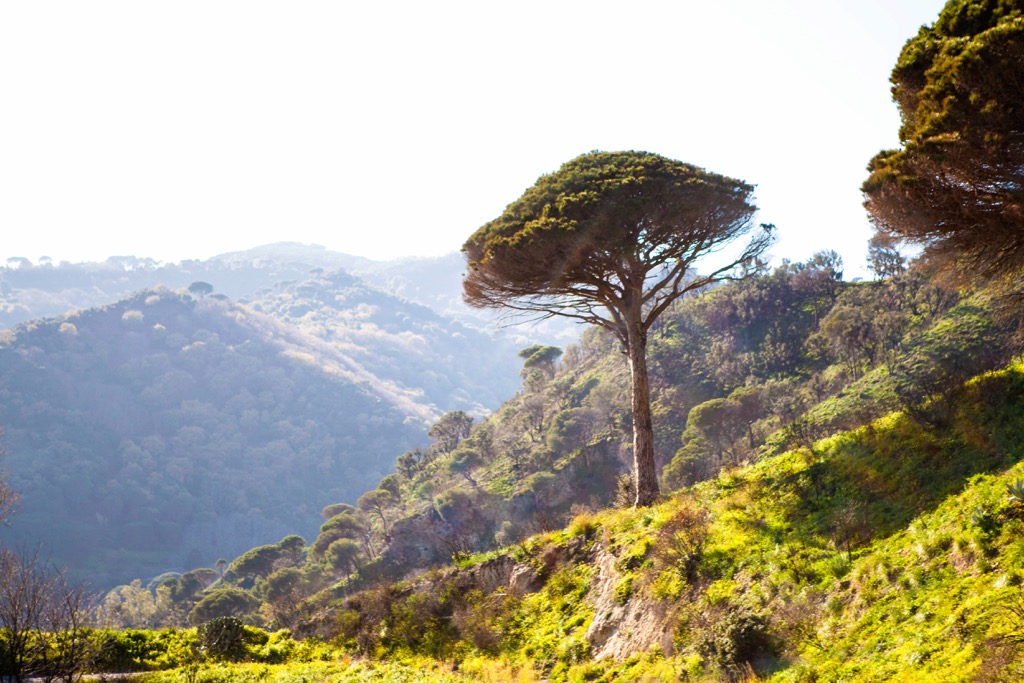
Near the coasts, visitors are likely to spot olive trees, vineyards, and a variety of citrus trees. The mountainous inland regions support populations of dwarf psalm, lavender, rosemary, carob, cork oaks, and tamarisks.
Fauna commonly found in Sicily include wild boar, roe deer, fallow deer, pine marten, European hedgehog, European wildcat, red fox, crested porcupine, and least weasel. Bird species such as golden eagle, Eurasian hoopoe, and peregrine falcon are also common. The endemic Sicilian wolf was driven to extinction during the twentieth century.
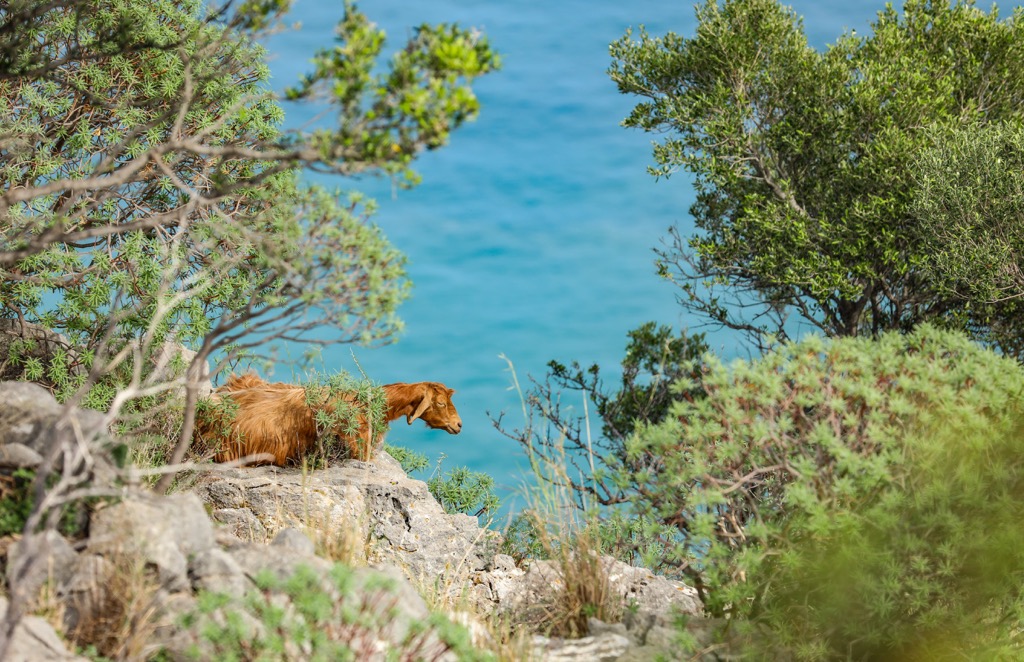
Humans have likely inhabited Sicily for over 10,000 years. Sicily’s strategic location near the center of the Mediterranean has given it a rich history filled with numerous cultures and peoples.
Three major groups occupied the main island of Sicily during the age of the Greeks. The island's eastern region was home to the Siculi people, while the Sicani lived west of the Gelas River. The Elymians, believed to be descendants of the Trojans, inhabited the westernmost region.
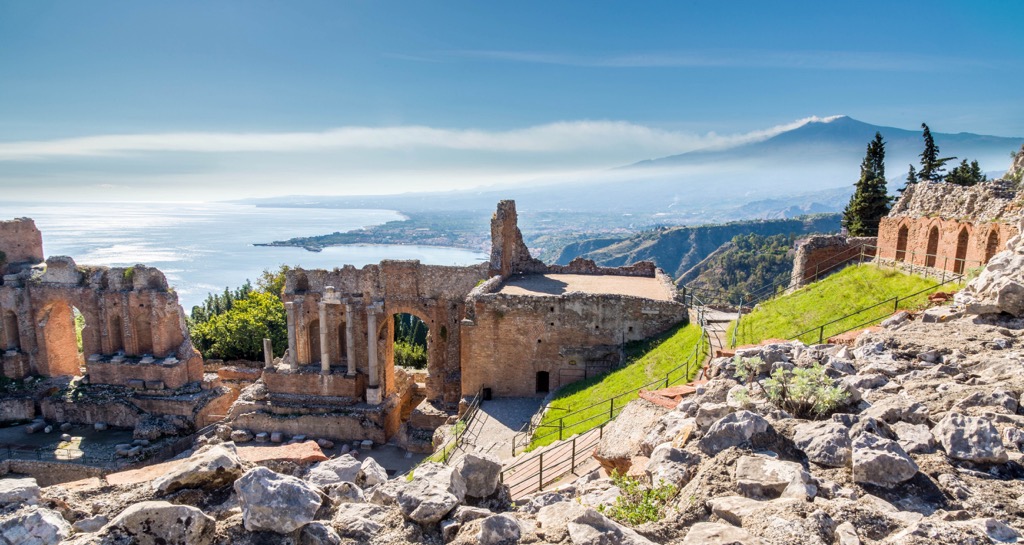
The Greeks settled across Sicily’s shores from the eighth to sixth century BCE. During this time, the mountainous region near the center of the island remained inhabited by the Siculi people.
The island of Sicily became the first Roman province during the third century BCE. Following the fall of the Roman Empire, the Byzantines occupied Sicily and eventually ruled the surrounding region.
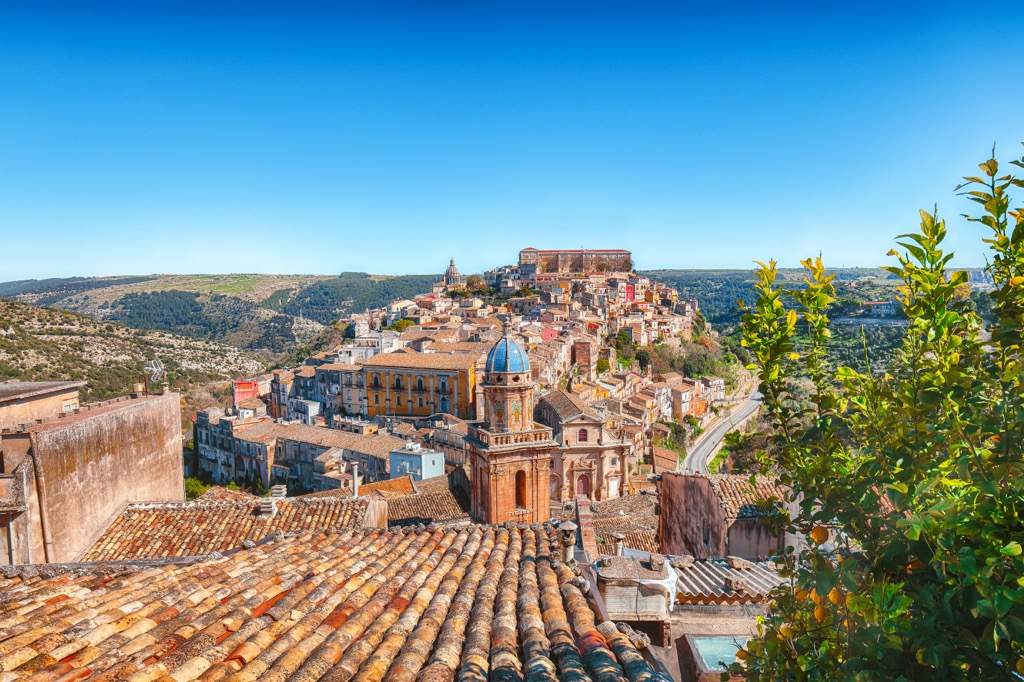
In 965, an Arab conquest from North Africa conquered Sicily, followed shortly by a Norman conquest in 1060. A later state, the Kingdom of Sicily, lasted from 1130 to 1816. Sicily became part of Italy in 1860 after the Expedition of the Thousand revolt during Italian unification. The region of Sicily was declared an autonomous region in 1946.
Today, the region of Sicily is home to 5 million people and has an economy centered around agriculture, industrial activity, and tourism.
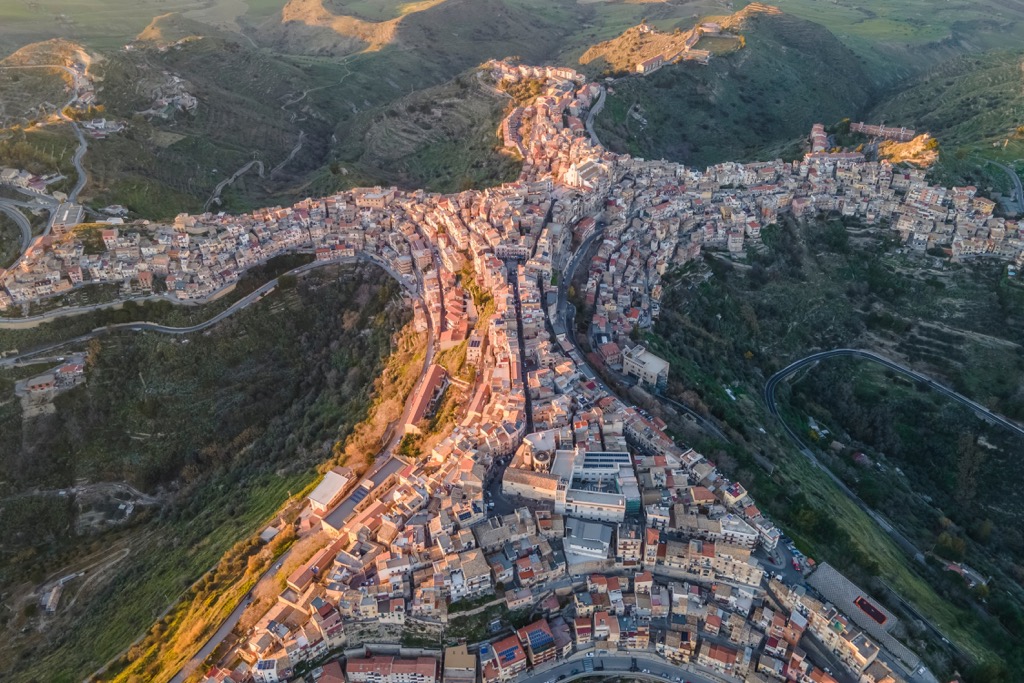
There are multiple designated hiking areas throughout the region of Sicily. Below are a few popular areas and routes to check out on your next visit:
Mount Etna marks the tallest peak in Sicily and the tallest active volcano in Europe. The park surrounding the volcano spans 580 sq km (224 sq miles) and encompasses over 20 surrounding towns.
Visitors can marvel at the snow-capped peak, the four summit craters, the black lava, and the surrounding vineyards. While there are many trails in the park, visitors can also take guided tours for those wishing to reach the summit. Some of the most popular routes include Sapienza Refuge - Etna Central Crater, Grotta Pitagora - Schiena dell’Asino, and Sentiero Schiena dell’Asino - Monti Calcarazzi.
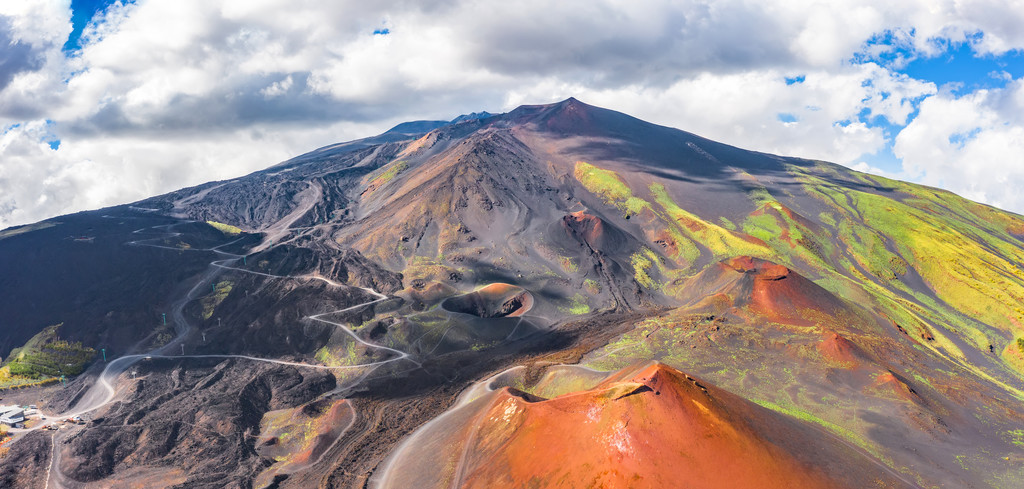
This park is located in the northeastern region of Sicily, encompassing the Nebrodi Mountains. Within the park lies one of the largest forested areas in Sicily, along with small and remote villages. Those visiting the region can experience solitude amidst the yew, beech, ash, oaks, elk, and maple trees.
Numerous trails wind through the forested landscape, offering a glimpse of what much of the island's terrain once looked like. Those visiting this park should explore the Catafurco Waterfall trail and drive to the ancient village of Mistretta.

Zingaro Nature Reserve is near the northwestern tip of Sicily, a short drive outside the capital city of Palermo. Home to roughly 40 species of birds, the park boasts nearly 700 species of Mediterranean plants and stunning views of the Mediterranean Sea. Visitors can explore the hiking trails or descend into one of the many coves, ideal for swimming and snorkeling. Popular routes include the Zingaro Natural Reserve Coastal Trail and Path of the Orchids.
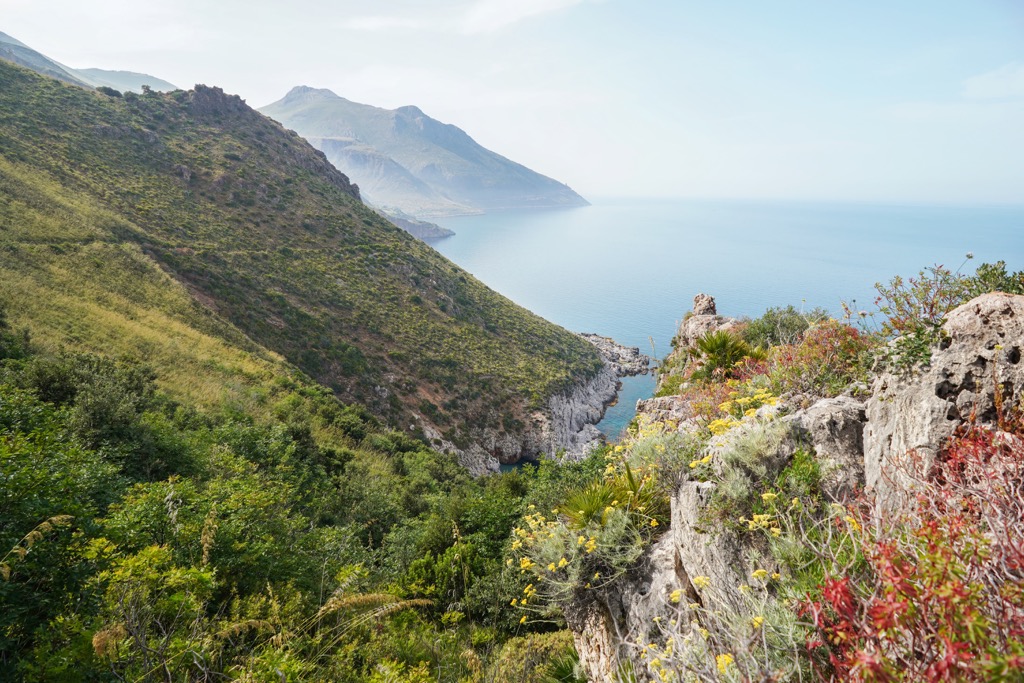
Looking for a place to stay on your next trip to Sicily? Below are a few options for villages and cities on the island:
Palermo is situated in the northwestern region of the island and marks the capital of Sicily. The city is home to around 673,000 residents and is a popular spot for those visiting the island for the first time. Numerous sandy beaches embrace the shores, with popular spots including Mondello, Spiaggia di Vergine Maria, and Cap Gallo Beach.

The city of Palermo features sites including the Norman Palace, Zisa, Palazzo Abatellis, Palermo Cathedral, Capuchin Catacombs, and the Teatro Massimo Vittorio Emanuele. Besides beautiful beaches and historical sites, Palermo is also home to bustling streets filled with local restaurants, bars, and vibrant nightlife.

The town of Taormina resides along the eastern coast of Sicily near the base of Mount Etna. This hilltop town is an hour's drive from the Catania Airport and is full of medieval buildings and dramatic cliffs that drop into the Ionian Sea. Home to roughly 11,000 residents, Taormina has garnered the nickname Pearl of the Ionian Sea.
The Teatro Antico di Taormina, a theater dating back to Greco-Roman times, is still used today. Visitors can wander the historic streets, explore Panasia Beach, or hike up to Chieas Madonna della Rocca.

Explore Sicily with the PeakVisor 3D Map and identify its summits.

